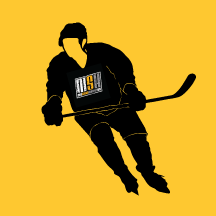Slate
Blackcurrant
Watermelon
Strawberry
Orange
Banana
Apple
Emerald
Chocolate
Marble
Slate
Blackcurrant
Watermelon
Strawberry
Orange
Banana
Apple
Emerald
Chocolate
Marble
-
Content Count
1408 -
Joined
-
Last visited
-
Days Won
32 -
Feedback
100%
marka last won the day on May 21
marka had the most liked content!
Community Reputation
525 ExcellentAbout marka


- Birthday 01/01/1970
Equipment
-
Skates
Mako M8
-
Stick
True XCore
-
Gloves
QRL Pro
-
Helmet
Bauer Re-Akt 200
-
Pants
Easton Pro 15
-
Shoulder Pads
Mako
-
Elbow Pads
Reebok 11k
-
Shin Pads
CCM Ultra Tacks
-
Hockey Bag
Warrior Pro
Profile Information
-
Gender
Male
-
Location
Youngstown, OH
-
Spambot control
123987456
Recent Profile Visitors
7600 profile views
-
Howdy, I just spray mine with 91% isopropyl alcohol, undiluted. Everything but skates. Mark
-
Howdy, Yeah, doesn't look like a helmet piece to me either. Part of your bag maybe? Mark
-
Howdy, Woohoo! Glad to see you getting back out. 🙂 So, full cage or sticking with the half shield? 🙂 Mark
-
Howdy, Way to go! Glad to see a pic of you up and smiling. Well, "New England Smiling" anyway. 🙂 Continued progress on the healing! Mark (You're gonna get little tattoo stiches next to the scar, right? And go as Frankenstein for Halloween? :))
-
Howdy, Hey man, been travelling and just saw this. Hope the procedure went well and you're annoying nurses right now! Mark
-
Howdy, Stopped there this morning on the way through the area... Pretty decent! New Sticks were $140 iirc. Hockey socks for $10/pair, half shields for $10, game jerseys for $100. Lots of other stuff too. And this was at 11am on day 3. Thanks for posting it! Mark
-
Howdy, Huh. I'm travelling to Maine this weekend and spending Saturday night near there. How good is this sale usually? Mark
-
Howdy, "Like" isn't really the right emoticon here for "holy fuck, I hope this goes well and sending you good vibes and hugs". Mark
-
Howdy, Holy shit! Hopefully catching it early (I hope?) means treatment goes well. And yeah, having a puck bash your face in ending up being a good thing... Wow! Mark
-
Howdy, I really need to show my wife that sticks picture. Mark
-
Howdy, I like my Tacks as well, and agree with the "tanks" comment. But if you're looking for lighter / lower profile compared to the 20k I wouldn't imagine that would be it. Mark
-
.jpg.a9bc389206d6e3a612915414760295c3.thumb.jpg.13c07380c9ee0ec5247ddd690732946b.jpg)
Rbk style Skate locks any demand for manufacture?
marka replied to Vince58's topic in Ice Hockey Equipment
Howdy, Maybe to some extent (and I think its due to the stiffness of the boot vs. anything else), but I still think there's a lot to be said for explicitly being able to set lace tension on the instep/forefoot vs. the ankle area of the foot. To me, lace locks are one of the things I wouldn't mind having back on my skates for sure. The bigger question is how easy they would be to integrate well on a boot with normal eyelets. Mark -
Howdy, Brace and ibuprofen is what I do as well. A doctor buddy that I played with for a while basically told me that there's nothing that's going to 'bring back' my knee. His advice was to do a brace / ibuprofen and when it became something I couldn't deal with anymore that I should come see him for a replacement. In my case, this is coming from an old meniscus tear though, so maybe your situation is different. Mark
-
Howdy, So, I finally baked one pair of the TF9 skates I've had for a while, since my TF7s were showing some more significant signs of wear. And then started using them. I don't like the thin TF9 tongues, as it puts a lot of pressure on a bump on my instep. I also don't like the thick felt tongues that one of the tf9 pairs I bought came with... I'm not sure of the name, but they're a thick felt with a sewn on metatarsal pad on the upper part of the tongue. I finally swapped in the tongues from my old pair of TF7s and they're just right. However, when I search for TF7 replacement tongues I'm not finding much stock. Ice Warehouse shows some in size S, which apparently goes up to a size 5 skate. I'm in a 6.5. No stock on the Mediums, which starts at a size 6. Does anyone know how dimensionally different the tf7 replacement tongues are size S to size M? If its just how long the tongue is, I probably don't care. and I have to tuck the sides in when I lace up as well, so if its just a bit narrower... Also probably don't care. Otherwise.. Are the felt cat 7/5 replacement tongues the same as the TF7 tongue, other than the color? I can probably live with the color. Edit: Are the goalie skate replacement tongues the same as the player skates? I see some of those on SLS. Appreciate any leads / advice. Mark
-
Howdy, Damn dude, that doesn't sound pleasant. You need like a frequent flyer card for medical shit or something. Like an automatic upgrade to the first class waiting room. Mark








